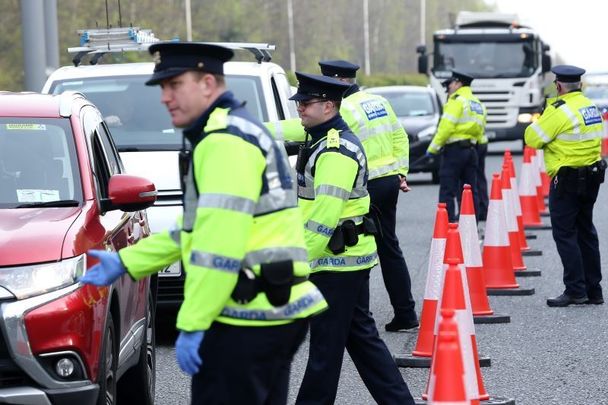Different health regimes in the two parts of Ireland are putting border counties in the Republic at the highest risk of coronavirus.
New epidemiological statistics from the Republic’s Health Service Executive (HSE) show that in recent days the number of COVID-19 cases in counties close to the southern side of the border are rising fast.
County Cavan overtook Dublin as the county with the highest incidence of the disease when populations are taken into consideration.
The latest figures, covering data up to last Friday, shows Cavan has an incidence of 753.5 per 100,000 of the population compared to Dublin’s 684.6.
Read more: Coronavirus updates from Ireland
The incidence of coronavirus in County Monaghan is also rising fast and now stands at 570.2, while neighboring County Louth has an incidence of 463.2.
Dublin County, with a population of around 1.4 million, still has the highest numerical instances, accounting for 10,000, or half, of the Republic’s total of 20,000 affected people.
The “border effect” is put down to a combination of instances, like the number living on one side of the border and working on the other, and a different style of management of the crisis.
Additionally, a more restrictive testing policy along with a more relaxed schools and business lockdown in the North are believed to have contributed to the higher percentage of illnesses and deaths from COVID-19 than there is in the Republic. This has contributed to a fall-over situation in the border region.
Belfast-born Dr. Gabriel Scally, who is president of the Epidemiology and Public Health Section of the Royal Society of Medicine, said proper investigation of this specific virus pattern is a problem because in Northern Ireland the available data is “quite poor” and testing for COVID-19 is not as widespread as in the Republic.
Read more: Irish scientist developing COVID-19 vaccine with US military
He acknowledged there was “an unusual pattern of cases” in the border counties.
Scally told Sean O’Rourke on RTE Radio that there could be a so-called “super spreader” in the border region, which is the cause of the high numbers of COVID-19 cases, but this will not be known until investigations and comprehensive tracing are carried out. That would require “an all-island approach.”
Meanwhile, as the May Bank Holiday weekend approaches, there have been demands from border politicians in the Republic for an amendment to legislation to permit gardai to enforce arrests and court action against Northern day-trippers planning visits across the border.
The demands follow a discovery by garda chiefs that the emergency COVID-19 ban on house-holders moving more than two kilometers from their homes cannot apply in law to those from outside the state who don’t have homes inside the Republic.
Almost a week before the bank holiday, gardai already started a campaign called Fanacht – the Irish for wait – to prevent the spread of the coronavirus.
It involves 2,500 highly-visible officers at checkpoints along main and country roads leading to tourist spots, especially in Co. Donegal, a popular location for Northern day-trippers.
Garda Deputy Commissioner John Twomey described this as “a critical week for the country.”
As the government expressed concern that waning public commitment to the anti-coronavirus battle might delay any easing of the lockdown due to expire next Tuesday, Twomey repeated that gardai need a high level of compliance to continue to save lives.
He said, “When we last ran Operation Fanacht there was a high level of compliance from the public. It is vital that we see that again…
“We need this compliance to continue. This is a critical week for the country. If we all work together, we can help save the lives of our family, friends, neighbors, and colleagues.”
An announcement by Taoiseach Leo Varadkar if there will be any easing of lockdown restrictions after May 5 is expected before the start of the Late, Late Show on RTE on Friday.
Read more: Ireland’s leader Leo Varadkar spotted back working as doctor to fight COVID-19




Comments